Yixing
Yixing, in northern Jiangsu province, is known throughout China for its dark clay. Many local businesses revolve around manufacturing earthenware goods from Yixing's "purple sand", either via mass production or by hand. Often, Chinese artists who work with clay will build their pieces out of material from this region. 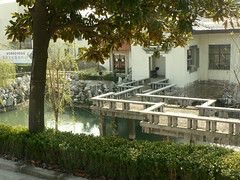
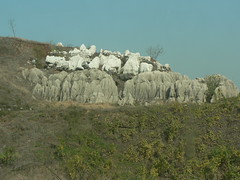
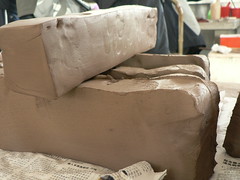
Yixing clay
We visited a teapot factory in Yixing, where people meticulously put together very high quality hand-made clay teapots.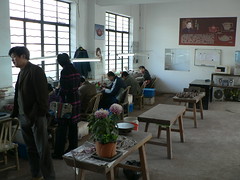
Each person will work on a different piece of the teapot - the spout, the handle, the base, the lid, and the main chamber. The work is very fine - despite making the walls of the teapot only 3 or 4 mm thick, the artisans manage to keep every part perfectly round and well formed. The end product looks as precise as a machine-built item could be, without manufacture marks.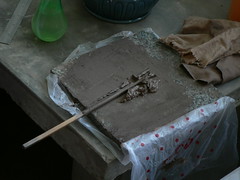
Wet clay, ready to be smoothed in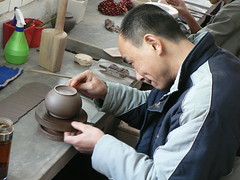
Smoothing the teapot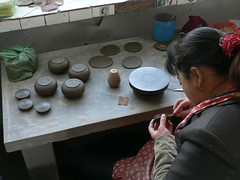
Finishing the lid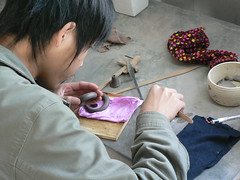
Making the handle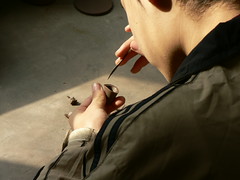
Carving a spout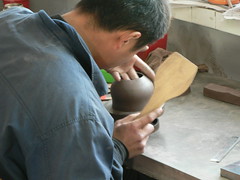
Thinning the chamber walls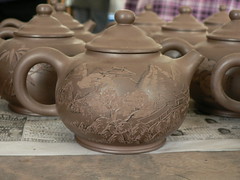
The finished product
On the ground floor of the factory is a small museum of teapots and tea sets made with Yixing clay by famous arists. Many are worth over 1 million RMB; for comparison, that's 100 000 Euro for a well-crafted and simple teapot.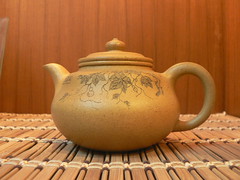
As well as a swelling pottery and glazing trade, there's a museum of pottery, containing a lot of ornate and interesting designs (mostly teapots!) in Yixing. There's some ancient pottery here, much older than most European countries, and also many beautiful exhibits of royal and modern earthware products.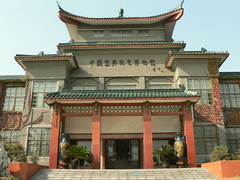
Yixing pottery museum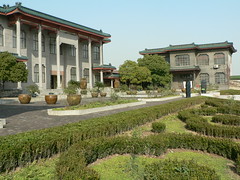
There's a fantastic huge bowl of heavy clay made for Emperors of the Ming Dynasty, whose is coloured a beautiful deep ivory tone and textured like large scales, topped by a green rim, over which lies a translucent sea green glaze. The full name is something along the lines of "Lotus Flower Dragon's Head Bowl". Unfortunately no photos were allowed here!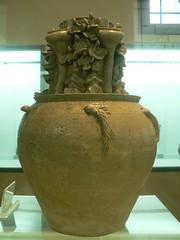
Around 200 years old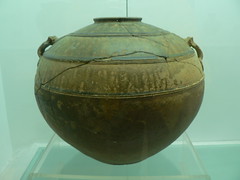
2000-3000 years old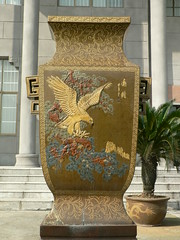
Relatively modern, and huge (~2m)
One very popular adornment to the teapots and the like we saw in Yixing is the inclusion of an old fighting beetle. I'm not sure of its English name. Men would place bets on their beetles, and whoever's beetle survived the fight would collect all the cash. There were also some very non-traditional looking pieces here, that could easily pass in any modern collection worldwide.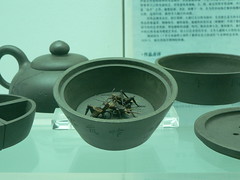
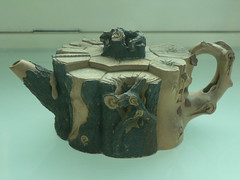
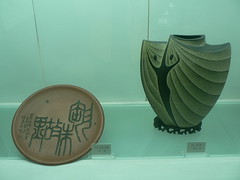
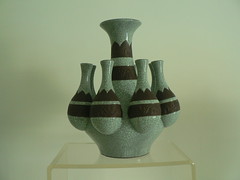
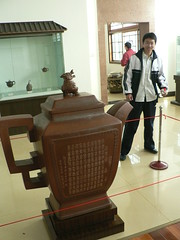
Yixing is also well known for its black rice. It's sticky, like most Chinese rice (imagine picking up grains of dry rice with chopsticks after a hard day's work!), and served with sugar. It's really delicious and goes well with most food. The tangy juices left by any even vaguely spicy dishes can be mopped up with sweetened black rice to make a very enjoyable mouthful! Around 4-7RMB for a 250g bag.
It's easy to collect pieces of purple clay Yixing pottery from any of the local dealers that crowd town; expect to pay about half the inital price offered. A 15cm long plain teapot goes for about 20-35RMB, with prices going up alongside size, as you'd expect!
If you're interested, you can pick up some genuine Yixing clay:
Antique Yixing teapots for sale
Cheap Yixing teapots

1 comment:
It's amazing to see how art is mass produced in China, not by machines but manually by hundreds of talented (and cheap) artists. I believe there's a village where almost everyone is dedicated to producing posters for example.
Post a Comment